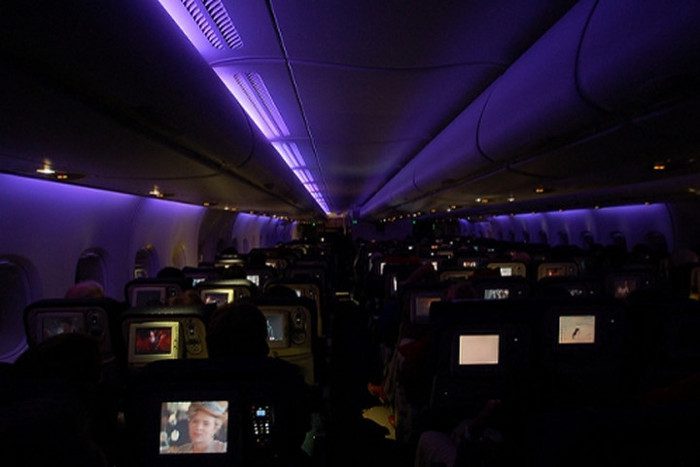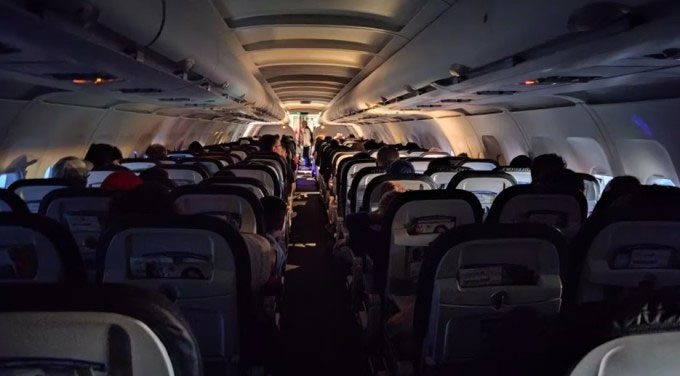Every time an airplane is about to take off or land, the cabin lights are dimmed to their lowest setting. Anyone who has flown before surely recognizes this. But have you ever wondered why?
Many people believe it is because the flight crew wants you to stop reading or looking at your phone and focus on their announcements. However, that’s not the case; a pilot has explained this to us.

Dimming the lights helps your eyes adjust to darkness more quickly.
Chris Cooke, a pilot with extensive flying experience, explained to Travel + Leisure magazine that dimming the lights is a regulation designed to ensure your safety, not just a matter of light and dark. He elaborates that this is a way for passengers’ eyes to adjust quickly in case the flight encounters problems and an emergency evacuation is necessary: “Imagine you are in an unfamiliar, brightly lit room filled with obstacles, and suddenly someone turns off all the lights, urging you to leave as quickly as possible.”
Clearly, transitioning from dim light to complete darkness is easier than going from bright light to dark. You will be able to see objects in the darkness more easily, facilitating a smoother evacuation in case of an emergency. This is also why airplane windows need to be opened during takeoff and landing to allow natural light, helping passengers move safely.
The human eye takes about 10 to 30 minutes to fully adjust to darkness. Dimming the cabin lights allows passengers and crew more time to adapt to low light conditions. This is crucial if the aircraft needs to evacuate at night. In fact, the adjustment period for the human eye in low-light conditions can significantly impact survival chances during an emergency.

Cabin lights are turned off during critical flight phases. (Photo: Daniel Martínez Garbuno).
Another reason for dimming the cabin lights is that the darker the cabin, the easier it is to see emergency lights and the illuminated aisles. This way, everyone on the plane will be better prepared for a quick and safe evacuation. According to Colin C. Law, an assistant professor of aviation business management at Stamford International University in Thailand, cabin lights are adjusted according to the external light conditions. For instance, during an evacuation while taking off, the cabin lights should not be set to the brightest mode to avoid hindering movement.
Dimming the lights is often associated with drawing the window shades on the aircraft. During the day, this measure ensures the cabin is filled with natural light, enhancing visibility. Naturally, in most cases, emergencies do not arise. Ultimately, airlines dim the cabin lights during takeoff and landing to reduce the aircraft’s power consumption, optimizing engine performance during these critical flight phases.


















































